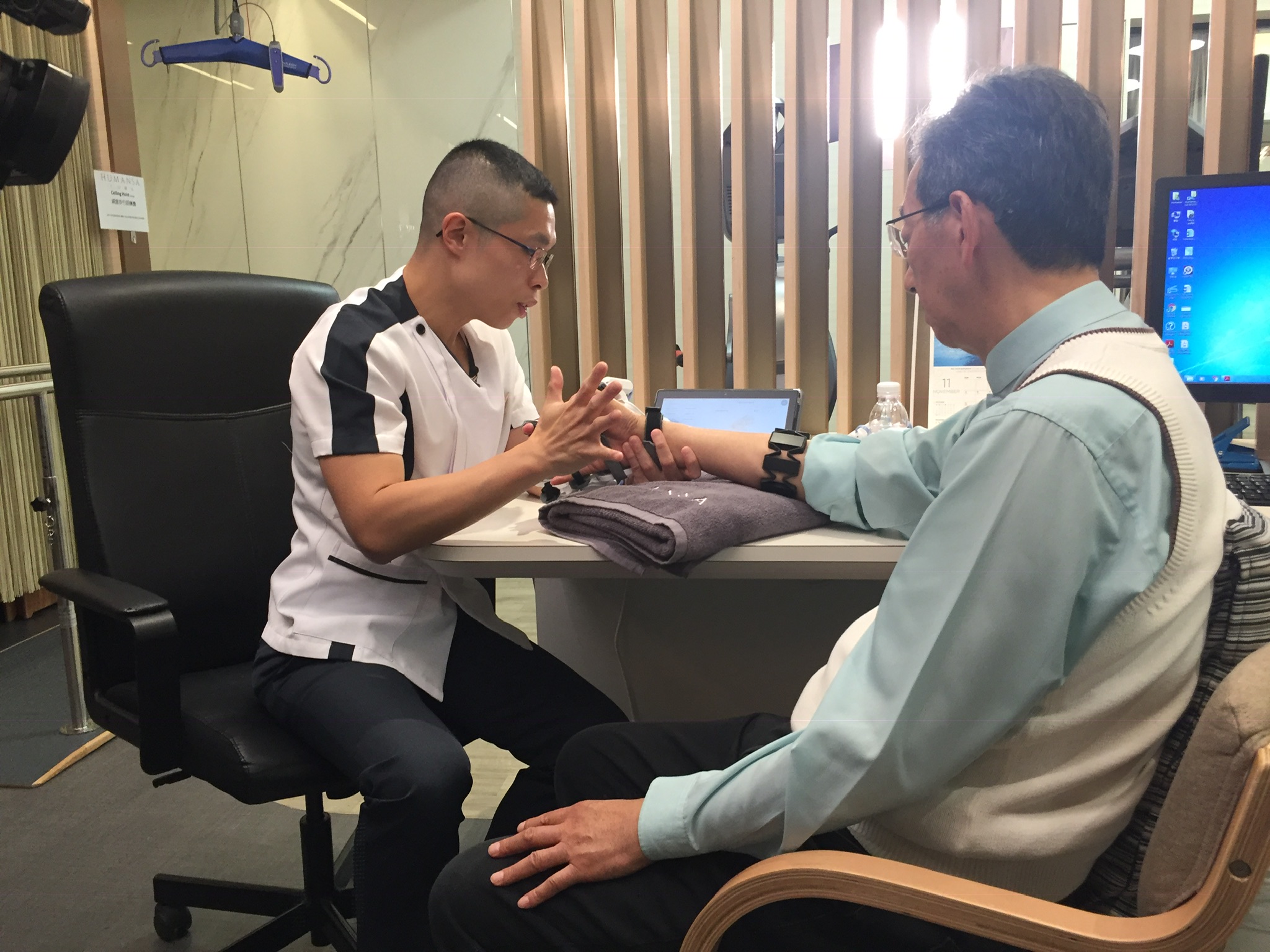Executive Summary
Zunosaki Limited, established in 2015, is a Hong Kong based robotic technology venture founded on a mission to tackle the problem of health care accessibility and improve the quality of life of the disabled. The start-up empowers community health care service providers with affordable solutions by designing and developing affordable robotic products for physical rehabilitation. The venture was previously incubated by the Hong Kong Science and Technology Parks (HKSTP). It is currently funded by private investors and the Hong Kong Government’s Social Innovation and Entrepreneurship Development Fund (SIE Fund). In 2018, their flagship product “HandyGalove,” a wearable robotic glove designed for hand function rehabilitation after stroke, was launched under the brand “HandyRehab.”
Social Issue
In Hong Kong alone, 25,000 people suffer from stroke every year. As medical technologies advance, the mortality rate of stroke cases has dropped significantly from 34.4 percent (2001) to 19.1 percent (2015). However, the livelihood of stroke patients remains an issue of concern. With an aging population, the city has been putting an enormous emphasis on improving the quality of living for the elderly and disabled through the means of poverty levitation and promotion of primary health care.
While the golden recovery period of a stroke survivor is the first three to six months from occurrence, significant physical and psychological improvements are observed up to two years. Yet, the City’s current public health care system can only offer patients up to two months of rehabilitation due to the shortage of resources. Stroke patients are then sent back to their home and, most of the time, forced to live in elderly nursing homes. However, the quality of services of these 800 elderly homes have been severely overlooked in the past three decades. These health care service providers often demonstrate a wide range in quality of services due to lack of resources.
The Solution
One of the key factors to improve the quality of life of the disabled is to empower them and their health care service providers with up-to-date medical technologies which are affordable and, most importantly, designed aptly for community and household usage.
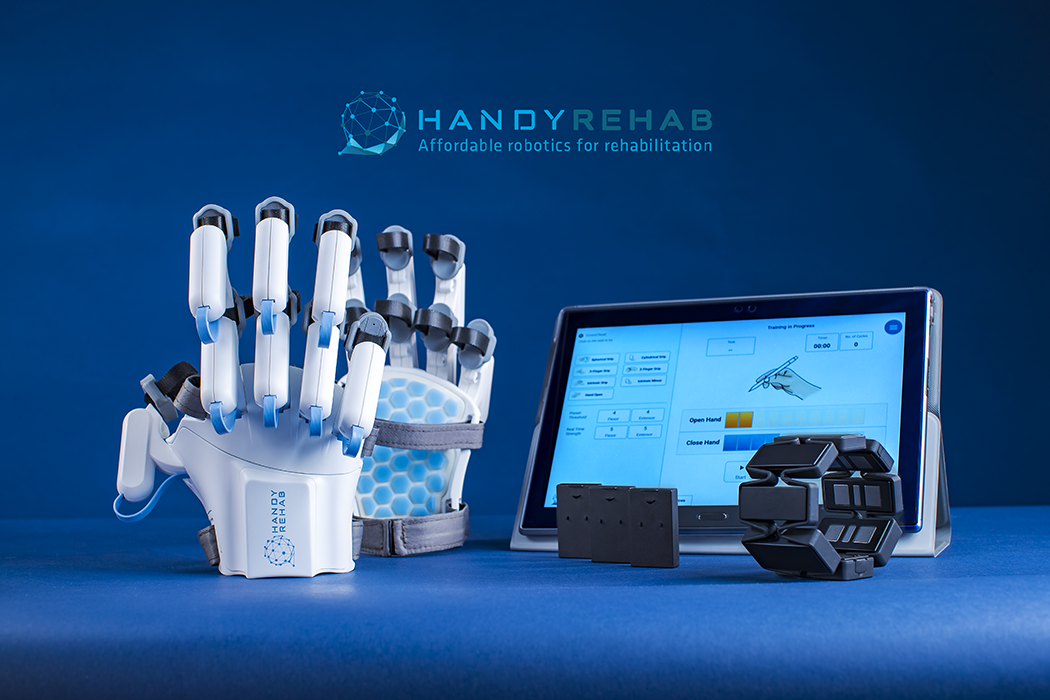
HandyRehab Product Set
Source: HandyRehab
Launching under the brand HandyRehab, the robotic assistive device is an exoskeleton over the hand. It provides power-driven extension and grasping force to the fingers and thumb in order to assist stroke patients in opening and closing their paretic hands by means of surface EMG-triggered from the signals through the forearm muscle groups (extensors and flexors). The product is light in weight (380g), powered by rechargeable Lithium batteries, and can be connected to an App on a smartphone through Bluetooth for gesture control, recording the movements as a report, and feedback to the patient or their therapist. The device provides three modes for hand function rehabilitation training after stroke:
- Passive movement: acting as a stretching machine, the device is able to achieve and maintain continuous motion for patients with disabled hands.
- Active assistive movement: with a surface electromyography (EMG) sensor, the device is able to interpret the user’s intention of movement and provide assistive force according to the patient’s will.
- Bi-manual training: motions of paretic hand are triggered by movement of the normal side.
Not only is it a rehab training equipment for physiotherapist and occupational therapist to use in health care institutions, but because of its portability and user-friendly product design, it is also an assistive device to help the disabled person complete daily tasks, such as holding a glass of water and objects such as a pen or utensils.
Running on the principal of neurorehabilitation, the technology is clinically proven to assist stroke rehabilitation to up to 90 percent of full motor control (finger movement). Furthermore, being able to get hold of real-life objects, patients are now motivated to make use of their disabled limb. As a result, increased utilization could improve both elbow and shoulder functions.
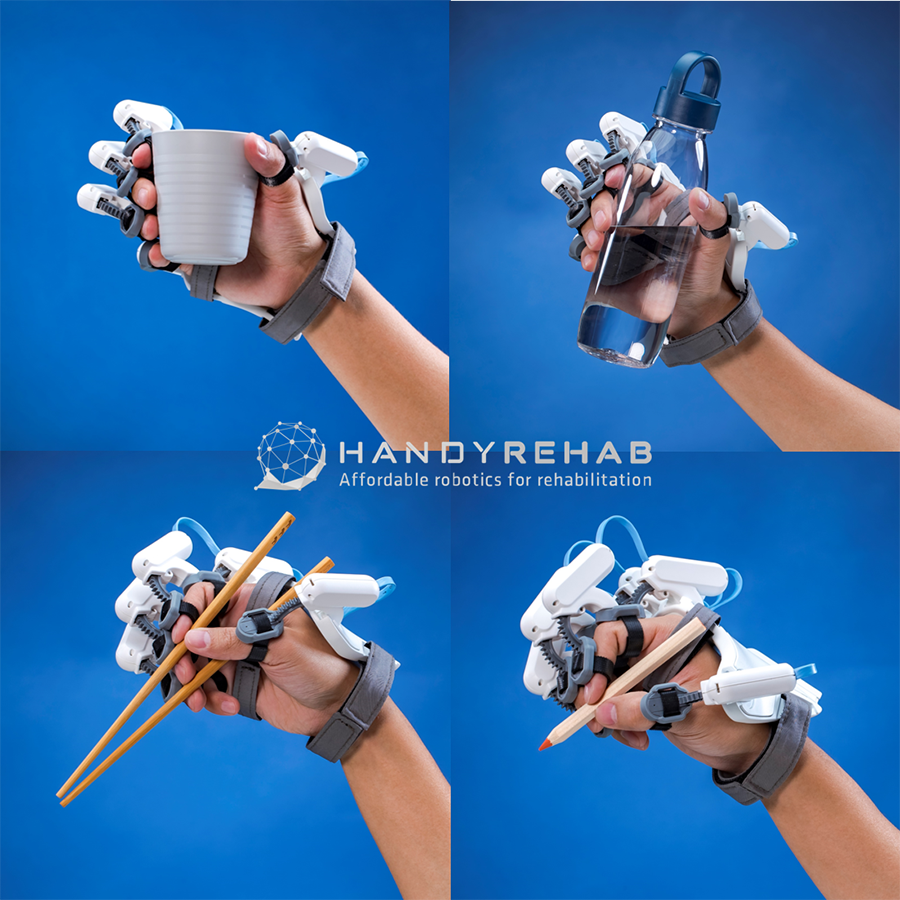
With HandyRehab, stroke patients are able to train with real life objects.
Source: HandyRehab
Business Model
Zunosaki strives to balance financial sustainability and to create impact in individuals. The company finances its research and development with funding from the Hong Kong Science and Technology Parks’ Incubation Programme and the HKGOV’s Social Innovation and Development Fund (SIE Fund). It has also successfully raised its Angel Round of funding from two groups of private investors.
The company will finance its expansion through sales revenue as well as equity raising. Zunosaki used capital raised to expand its R&D capacity which enables the company to expand its product offerings. Funding will also be used to expand marketing and sales channels, both domestic and overseas.
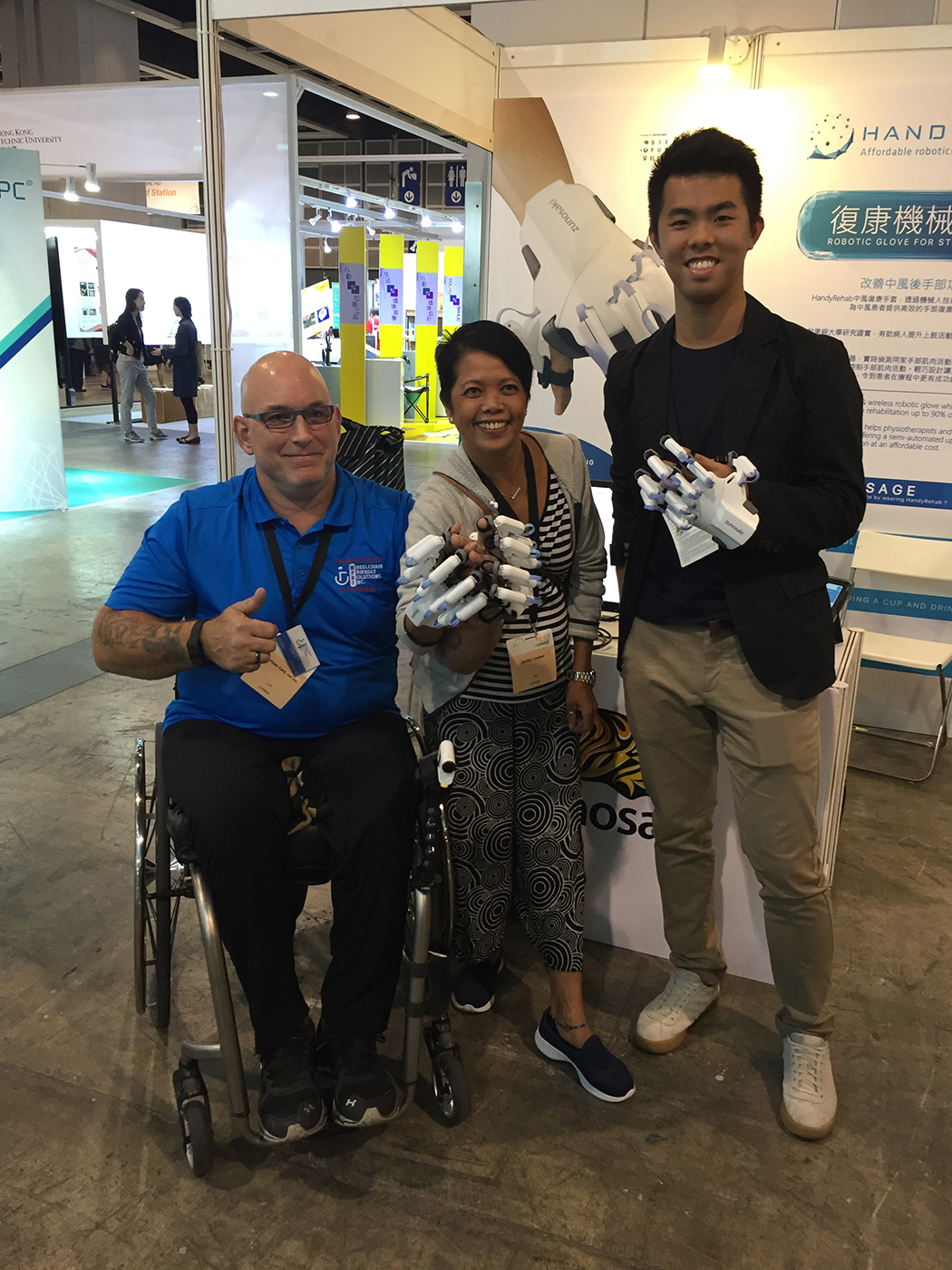
Product showcase at the Gerontech and Innovation Expo cum Summit in Hong Kong (2018).
Source: HandyRehab
Key Survival Factor
In the early establishment of Zunosaki, the founding team invested in three prototypes but later on decided to focus on commercializing one single product based on their market research.
Developing strategic partnerships, building a product that meets customers’ needs, and early engagement with multiple stakeholders are some of the crucial elements of Zunosaki’s successful launch of HandyRehab in Hong Kong. During the first two years of product development, the team had been reaching out to numerous rehab service providers in both Hong Kong and overseas, seeking early adopters, conducting case studies, as well as exchanging knowledge with industry experts. By the time the product was mature for deployment, the team had already established relationships with more than 50 institutional users including hospitals, elderly nursing homes, private clinics, and other service providers. The product has so far been tested with a variety of patients, from patients who suffered a stroke just weeks ago to some with more than 20 years of stroke age, from a 24-year-old young man to a lady in her 80s.
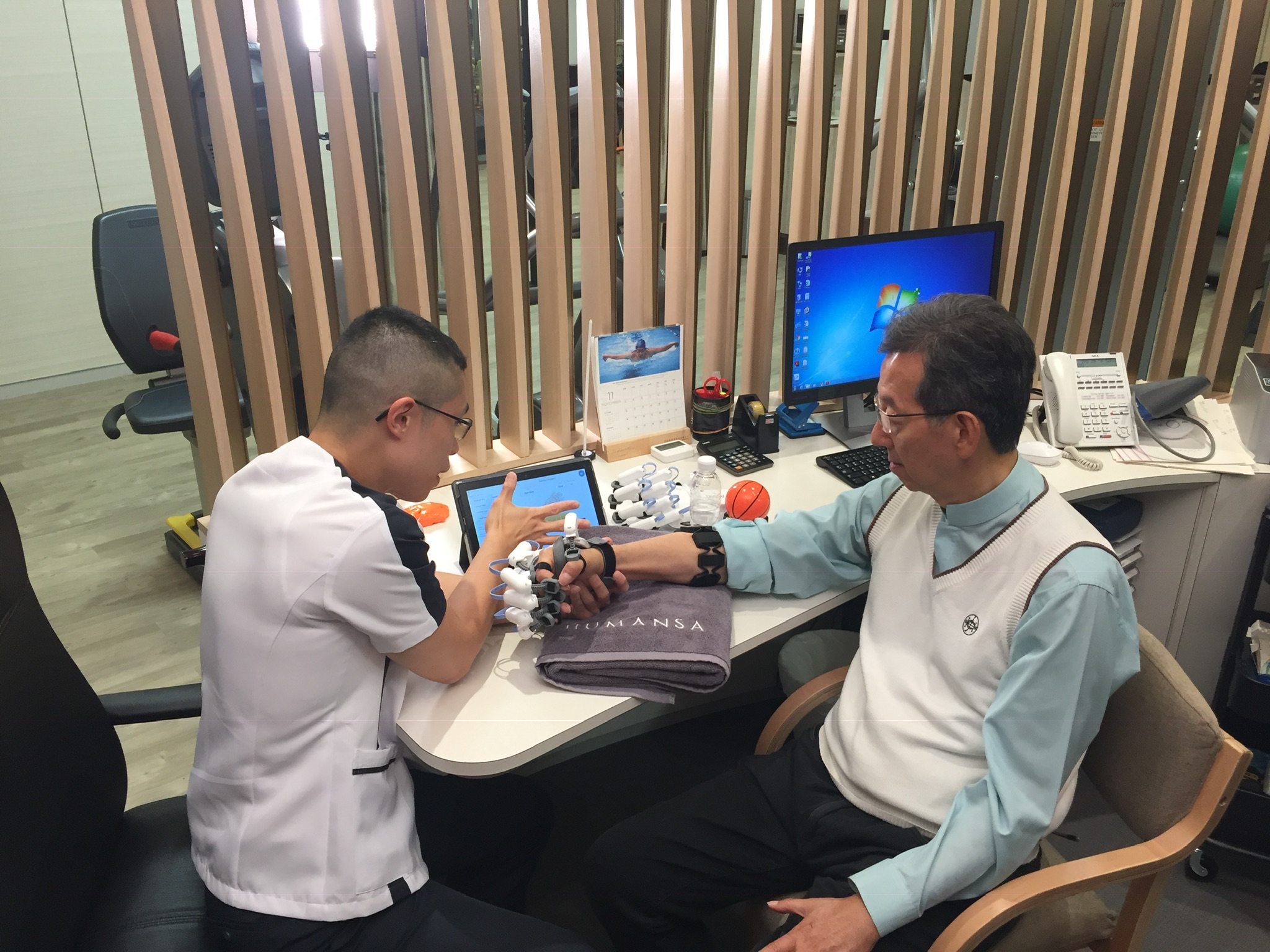
HandyRehab being used in clinical setting.
Source: HandyRehab
Expanding Strategy & Scaling Impact
Source: HandyRehab
Robotic-assisted therapy is regarded as a more effective and efficient method than conventional rehab therapies to promote recovery. Unfortunately, its adoption in rehabilitation is limited to hospital service providers due to the high cost and bulky size of existing products on the market.
With HandyRehab’s household-compatible design and affordable offerings, robotic rehabilitation trainings are no longer limited to hospital use. The company is set to bring the product to overseas markets such as Singapore, Japan, and the U.S. in the next few years through work with different local partners.
Author bio
Alvin Cheung is the co-founder and COO of HandyRehab (Zunosaki Limited). Alvin is responsible for technology commercialization, business development, and fundraising. He has an extensive understanding of community health care needs through working with various NGOs, medical professionals, and community-based health care service providers. In 2018, he helped the company raise a total of HK $6 million from private investors and government funding programs.
Alvin grew up in Hong Kong and lived in London and South Carolina in the U.S. He holds a bachelor’s degree in Business Administration (International Business and Chinese Enterprise) from The Chinese University of Hong Kong.



